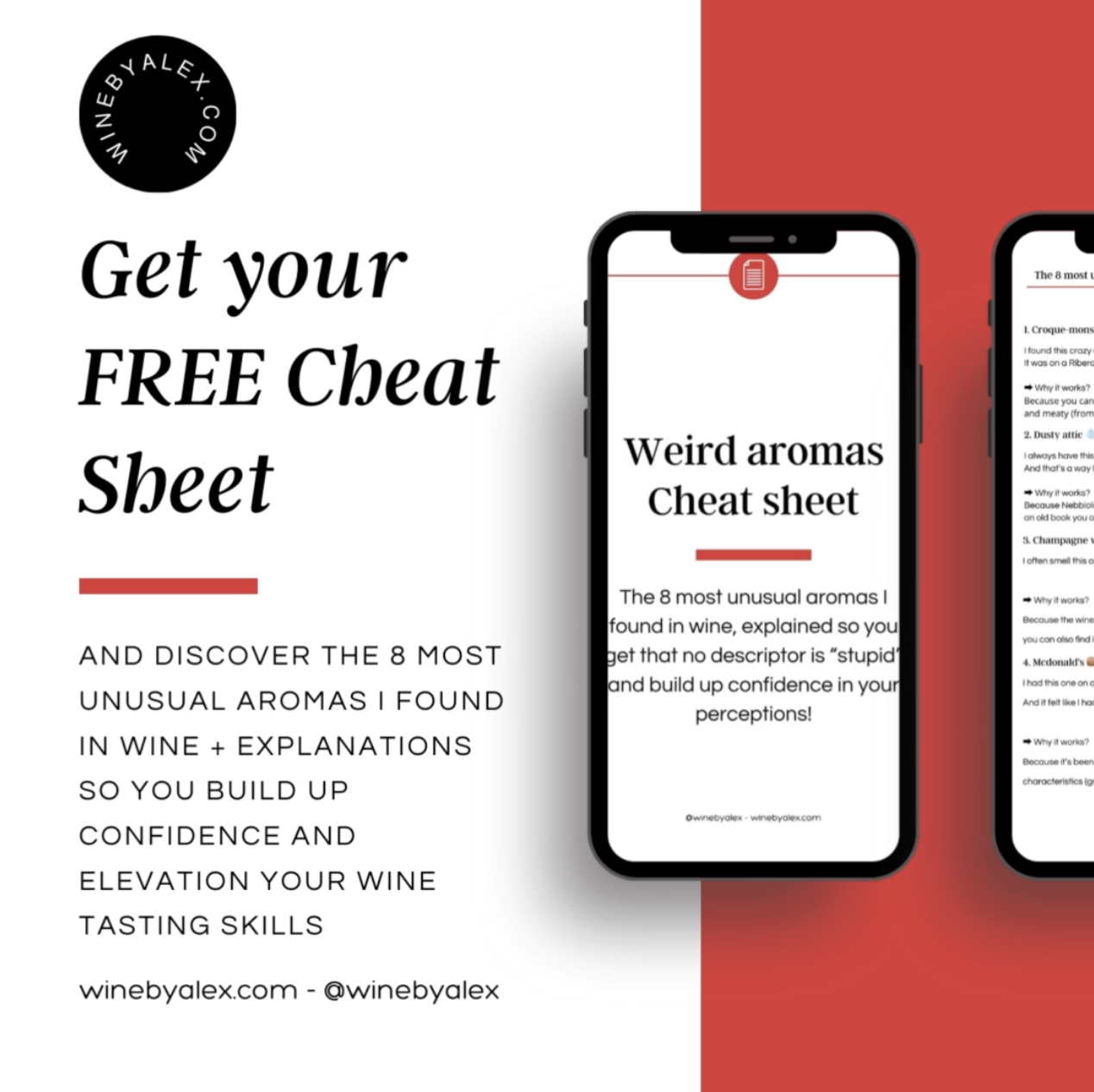How to: the 6 steps that make Champagne outstanding
Welcome to Wine by Alex, the show to watch to take your wine game to the next level!
Today you’re watching a brand-new episode of #Askwinebyalex and I’ve got a question from Julie of @kinsmanjulie:
« I want to know how to make Champagne! 🥂»
Julie, I’m all passionate about this topic as well! It’s a complex process so I’ll try to break it down in the most simple way possible for you.
How to make Champagne: things to know before anything
Before diving into the process of how to make Champagne, there are a few things you need to know.
Grapes with low sugar & high acidity
In order to make high-quality Champagne, producers need to have healthy grapes that contain lower sugar levels and higher acidity than grapes used in regular winemaking. Why’s that? Champagne will go through 2 fermentations but the alcohol level should still meet the appellation requirements. The lower the sugars in the grapes, the lower the alcohol in the wines. Acidity will balance the richness of Champagne. For this, climate in Champagne is absolutely perfect! The region’s located in the North of France with cool continental climate that’s exactly suited to the type of wine producers aim to create.
Base wine: still, dry, acidic & low in alcohol
Producers make regular still wines before adding bubbles into them. To make this regular wine, they hand harvest the grapes and transform them into wine through a first fermentation. Then, according to the style of wine they want to make, they choose to do malolactic conversion, lees ageing, oak maturation… Or not. So at the start of the process, they have a still wine that’s dry, acid and with low alcohol.
How to make Champagne: the 6 steps🍾
Now the process of adding bubbles to the wine can start. First, producers put wine in a bottle with sugar and yeast. The bottle’s closed with a screwcap and left to rest on its side in a cool environment.
Second fermentation
It occurs within the bottle because yeast eat sugar and convert it into alcohol. This adds 1.2-1.3%abv to the wine. CO2 produced through fermentation is captured in the bottle and dissolves into the wine, creating the bubbles!

Yeast autolysis
Once second fermentation is complete, yeast have no sugar left to eat so they die. They fall at the bottom of the bottle and start to break down. This process will add the famous aromas of bread, pastry, biscuit and toast to the wine. This autolysis must last at least 12 months according to Champagne regulations. But producers can make it last a lot longer, some up to 10 years! The longer the autolysis, the more intense the autolytic aromas into the wine. The wine will be more complex, and of course more expensive to buy.
When producers have the aromatic intensity they aim for in their wines, they have to get rid of the dead yeast. These lees make the wine unclear and most consumers won’t buy an unclear wine.
Riddling / Remuage
To remove the lees, riddling (or remuage) is done. This process consists of taking the bottle from « on the side » position to an « upside down » position. It’s done very slowly to avoid putting the lees in contact with the wine again. The dead yeast slide from the side of the bottle to its neck gradually. Winemakers move the bottles once a day: they spin them by 1/8th and incline them towards the upside down position. If done manually, it can take up to 8 weeks. It’s super long and labour-intensive. To accelerate the process, gyropalettes have been invented. They take 8 days to do the same thing to a much larger number of bottles.

When the bottle’s upside down with the lees in its neck, it’s time to finally get rid of the lees.
Disgorgement
Producers dip the bottle neck into a frozen brine. It freezes the lees so the bottle can be turned right side up again. Then the screwcap is removed and the pressure ejects the freezed lees. This process takes only a few seconds and is now automated.
Dosage
However, small amounts of wine are lost. Producers need to fill the bottles in. Wine is added to top the bottles up. And winemakers can also add sugar at this moment, which will determine the final sweetness level of the wine. Most popular sweetness levels are Brut Nature, Brut and Demi-sec:
- Brut Nature / Zero dosage: no sugar added to the wine, tastes bone-dry
- Brut: the most numerous wines, 0-12g/L added, tastes dry to off-dry
- Demi-sec: more and more rare, 32-50 g/L, tastes sweet
Bottle closure
To end Champagne winemaking, producers finally close the bottles with a cork and a wire cage that will help withstand the pressure. It can be equivalent to 6 atmospheres in Champagne!
That’s why you need to be very careful when you open a bottle of Champagne! Keep in mind to always firmly keep one hand on the cork and that the other one will spin the bottom of the bottle, not the other way around!

Well, that’s all for today! I hope that knowing how to make Champagne will add a little sparkle to your day! ✨🥂
Now, I’d love to hear from you.
Did you know that making Champagne is so long and labour-intensive? I’m curious, what’s your all-time favourite Champagne?
Let me know in the comments below!
Thank you so much for watching this episode and I’ll see you soon on Wine by Alex!
Cheers,
Alexia Hupin
P.S.: Share your questions in the comments below! I’ll answer weekly!
P.P.S.: Want to know how to pair Champagne with food? Check out my previous #AskWinebyAlex on How to make awesome pairings! 🥂








